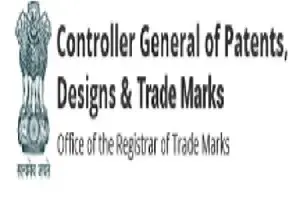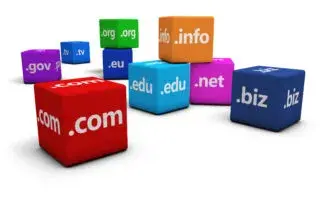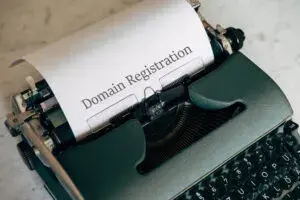CGPDTM’S NOTICE ON EXTENSION OF LIMITATION PERIOD.
 The Office of the Controller General of Patents, Designs and Trademarks (CGPDTM) has issued another public notice dated May 21, 2021 in furtherance to the Hon’ble Supreme Court’s order dated April 27, 2021 in the case of extension of limitation period.
The Office of the Controller General of Patents, Designs and Trademarks (CGPDTM) has issued another public notice dated May 21, 2021 in furtherance to the Hon’ble Supreme Court’s order dated April 27, 2021 in the case of extension of limitation period.
Turbulence Ahead for GoAir/GoFirst? Trademark Rights and Issues.
 For the past 15 years or so, GoAir has been a preferred mode of air travel for many customers in India, due to its competitive fare pricing. Since the early 2000s, the growing demand for low-cost carriers/flights in India led to an explosion of new players on the scene– GoAir, Indigo, Spice Jet, etc.
For the past 15 years or so, GoAir has been a preferred mode of air travel for many customers in India, due to its competitive fare pricing. Since the early 2000s, the growing demand for low-cost carriers/flights in India led to an explosion of new players on the scene– GoAir, Indigo, Spice Jet, etc.
TYPOSCAMS! PHISHING! TYPOSQUATTING in light of COVID-19 – Watch what you read!.
 Many of us have at one point of time or the other disconnected such unsolicited calls in frustration. Unsolicited calls for such ‘scams’ have been there for decades.
Many of us have at one point of time or the other disconnected such unsolicited calls in frustration. Unsolicited calls for such ‘scams’ have been there for decades.
WATCH WHAT YOU READ! PART 2: PHISHING/SPOOFING THREAT OF HOMOGRAPHS/ HOMOGLYPHS.

Phishing comes in many shapes and forms and is a menace which is as old as modern internet itself. This particular piece will cover a more advanced and often dangerously overlooked type of phishing or web-attacks. Phishing involving minor typographical errors is not a new threat to the public.
Net 4- ICANN Identifies Gaining Domain Registrar!- UPDATE.
 In a very welcome and much-awaited move, which would affect thousands of Net 4 India Limited’s customers whose domain names/websites have been in a state of limbo with the said ex-domain registrar, ICANN has finally announced the name of the gaining registrar to whom the domain names registered with Net 4 will be transferred to via bulk-transfers.
In a very welcome and much-awaited move, which would affect thousands of Net 4 India Limited’s customers whose domain names/websites have been in a state of limbo with the said ex-domain registrar, ICANN has finally announced the name of the gaining registrar to whom the domain names registered with Net 4 will be transferred to via bulk-transfers.
CGPDTM’S NOTICE ON EXTENSION OF LIMITATION PERIOD.

The Office of the Controller General of Patents, Designs and Trademarks (CGPDTM) has issued another public notice dated May 21, 2021 in furtherance to the Hon’ble Supreme Court’s order dated April 27, 2021 in the case of extension of limitation period[1].
SC’s extends Limitation Period in all cases
Earlier the Learned Controller General notified to all the stakeholders that period of limitation shall be computed in accordance with the Apex Court’s order dated March 08, 2021 as passed in Suo Motu Writ Petition (Civil) No. 3 of 2020 (In Re: Cognizance for Extension of Limitation[2]. The said order lifted the extendable limitation in light of stability observed nationwide, and instead computed the period of limitation to be adhered by all stakeholders[3]. Thereafter, in view of the recent upsurge of the coronavirus cases in India, the Apex Court restored its order dated March 23, 2020 and in continuation of the order dated March 08, 2021 directed that the period(s) of limitation, as prescribed under any general or special laws in respect of all judicial or quasi-judicial proceedings, whether condonable or not, shall stand extended till further orders to minimise the hardship to litigant-public vide an order passed dated April 27, 2021 in Miscellaneous Application No. 665/2021 in SMW(C) No. 3/2020[4].
In view of the aforesaid holding of the Hon’ble Supreme Court, the Office of the Learned Controller General has now issued the following public notice:
“Therefore, it is hereby notified to all the stakeholders that the Public Notice dated 24.03.2021 stand withdrawn and timelines/periods for the completion of various acts/proceedings, filing of any reply/document, evidences, payment of fees, etc. falling due after 15.03.2020, shall be the date as decided/ordered by the Hon’ble Supreme Court”.
[1] https://ipindia.gov.in/writereaddata/Portal/News/725_1_21.5.2021_Public_Notice-Final.pdf
[2] https://ssrana.in/articles/cgpdtm-notice-supreme-courts-order-limitation/
[3] 721_1_24.03.2021_Public_Notice.pdf (ipindia.gov.in)
[4] https://ssrana.in/articles/supreme-court-extends-limitation-period/
Related Posts
End of Extension of Limitation Period during COVID-19- Supreme Court
SC’s order extending limitation doesn’t enlarge period upto which delay can be condoned
Turbulence Ahead for GoAir/GoFirst? Trademark Rights and Issues.

By Vikrant Rana and Pranit Biswas
For the past 15 years or so, GoAir has been a preferred mode of air travel for many customers in India, due to its competitive fare pricing. Since the early 2000s, the growing demand for low-cost carriers/flights in India led to an explosion of new players on the scene– GoAir, Indigo, Spice Jet, etc. Due to its competitive pricing, GoAir garnered many loyal customers and immense goodwill and reputation (in the name/brand GoAir), and, till date, holds a notable share of the Indian commercial aviation industry.
As has been reported in several news outlets, GoAir is shifting to an Ultra Low-Cost Model in a bid to further expand its business presence, and is preparing an Initial Public Offering (IPO) in the process of going public and has filed its IPO papers with SEBI. In addition, advertisements have also come out about GoAir rebranding itself to GoFirst. Many news reports have in fact suggested that the rebranding is related to a dispute within the Wadia Group, which owns the GoAir brand[5].
This article will attempt to delve into this from a trademark/brand-holding perspective and analyze the subtext behind circumstances leading a popular brand as GoAir to abruptly re-brand.
BUSINESS STRUCTURE OF GOAIR
GoAir conducts its business under the company GO AIRLINES (INDIA) LIMITED, which was incorporated on April 29, 2004. One of its 14 directors is Mr. Jehangir Nusli Wadia, popularly known as Jeh Wadia, son of Mr. Nusli Wadia, chairman of the Wadia Group.
However, the name of another entity, GO HOLDINGS PRIVATE LIMITED, has come up in the news, as a company which has significant control over the GoAir brand[6]. Jeh Wadia reportedly owns a 24% stake in Go Airlines (GO AIRLINES (INDIA) LIMITED), and was its Managing Director till January 2021. It is pertinent to note that Jeh Wadia is also 1 of the 2 directors of GO HOLDINGS PRIVATE LIMITED, which was incorporated in 2006.
GoAir brand/trademarks, used to be licensed by GO HOLDINGS PRIVATE LIMITED to GO AIRLINES (INDIA) LIMITED at least up until 2013-14, as per recent reports, however, use of the said brands/trademarks has not been governed by way of written license since then [7]. GO HOLDINGS PRIVATE LIMITED had in fact filed applications/obtained registrations for many important/core marks of the Airlines, which date back to as far back as 2005-2006 – such as www.goair.in, GO AIRLINES, , , etc.
TRADEMARK RIGHTS-HOLDING PATTERN
A review of the publicly available trademark records of the GoAir brand reveals that until April-May 2021, all trademarks associated with the said brand had been applied for and/or registered with GO HOLDINGS PRIVATE LIMITED (Jeh Wadia’s company) and not GO AIRLINES (INDIA) LIMITED.
Many of these trademarks date back to 2005, including some of their core marks. Even more startling is the fact that at the same time as the news of GoAir’s rebranding to GoFirst was breaking, and its preparation for IPO being publicized, GO AIRLINES (INDIA) LIMITED filed over 100 trademark applications related to the GoAir brand, as well as the new GoFirst brand, as recently as April-May 2021 [which includes trademarks such as GO FIRST (Application Nos. 4958407-4958413); (Application Nos. 4971207- 4971216), etc.].
Interestingly, many of these filings overlap with the older trademarks in the name of GO HOLDINGS PRIVATE LIMITED, as is illustrated by a couple of examples as below:
| GO HOLDINGS PRIVATE LIMITED | GO AIRLINES (INDIA) LIMITED | ||
| SIMILAR/ IDENTICAL MARKS | |||
| TRADEMARK | CLASS | TRADEMARK | CLASS |
| Filed on: March 20, 2021
Status: Objected Application Nos. 4914721 |
Filed on: April 28, 2021
Status: Formalities Check Pass Application Nos. 4958400- 4958406 |
||
| GO AIRLINES | 39 | GO AIRLINES | 9, 12, 16, 37, 38, 39, 42 |
| Filed on: March 20, 2021
Status: Objected Application Nos. 4914722 – 4914723 |
Filed on: May 11, 2021
Status: Formalities Check Pass Application Nos. 4970312- 4970318 |
||
| www.goair.in | 35, 39 | www.goair.in | 9, 12, 16, 37, 38, 39, 42 |
Further, the new filings of GO AIRLINES (INDIA) LIMITED also include many domain names besides goair.in, such as:
| TM App. Nos. | Trade Mark | App. Date |
| 4964536, 4964534, 4964538, 4964543, 4964539, 4964545, 4964542 | www.goairlines.com | May 04, 2021 |
| 4964516- 4964522 | www.goairlines.in | May 04, 2021 |
| 4964606-4964612 | www.gofirst.co.in | May 05, 2021 |
From the above, both parties appear to be scrambling to strengthen their rights over the core trademarks of the GoAir brand. Although, GO AIRLINES (INDIA) LIMITED has no old trademark applications or registrations under their own name. Moreover, GO AIRLINES (INDIA) LIMITED has filed its applications for GoAir.in claiming use since 2004 – although incidentally, as per the WHOIS data available on Registry.in¸ the domain name was created on February 16, 2005. [GoAir.in is the primary website/domain name of the airline].
TROUBLE IN THE AIR? NO SMOOTH SAILING INSIGHT
The revelations regarding the nature of trademarks holdings for the GoAir brand, coupled with the news reports, suggest that the re-branding may be related to the fact that all the GoAir brand/trademarks in question are not vested with the airline operating entity, i.e. GO AIRLINES (INDIA) LIMITED. Further, as reportedly there is no longer any existing (express) license between Jeh Wadia’s company (GO HOLDINGS PRIVATE LIMITED) and the airline, it may be possible that GoAir/ GO AIRLINES (INDIA) LIMITED suddenly found itself to be bereft of any statutory rights in the requisite trademarks.
It would be interesting to see how this story pans out over the course of the next few weeks.
MORAL OF THE STORY
The major takeaway for brand owners, start-ups and big companies alike, is that it is imperative that their valuable intellectual property is consolidated and held either with itself or the parent company or a special IP holding company, and/or at most, with a company whose ownership is directly under the parent company –such as a subsidiary in which the majority stakeholder is the actual parent company.
Lack of such steps can lead to a situation where the actual brand-user may one day find itself severed from its valuable trade marks and other intellectual property (required in the course of even day to day operations) due to lack of proper ownership or chain-of-title. This not only can lead to circumstances wherein a company may be constrained to litigate and/or transition to an alternate brand, but may also adversely affect business prospects, from the perspective of financiers and shareholders and the general market in itself, as such institutions may be reluctant to regard an entity whose core intellectual property and brand identity in itself is under threat, as being of significantly high value. In fact, Moneycontrol.com recently reported that GoAir in its Draft Red Herring Prospectus itself has reportedly listed a risk as “Our brand ‘GoAir’ and certain related trademarks, which we will continue to use until our transition to our new brand, and thereafter, are registered in the name of Go Holdings (in which one of our Promoters, Jehangir Nusli Wadia holds 99% shareholding) and not in the name of our Company.”. It has further been reported that the re-branding from GoAir to GoFirst itself has also been listed as a risk[8].
Thus, IP rights-holders should strive to keep IP rights immune to factors such as change in leadership, management disputes, etc., so as to not affect the sanctity of the everlasting brand. As illustrated by the above example of the venerable GoAir brand, if IP is not properly consolidated, they may become susceptible to damage due to management disputes, amongst other things.
[5] GoAir, promoter spar over trademark amid IPO plan: Times of India, May 15, 2021 (URL: https://timesofindia.indiatimes.com/business/india-business/goair-promoter-spar-over-trademark-amid-ipo-plan/articleshow/82642342.cms).
[6] GoAir DRHP hints at tussle with Jeh Wadia over trademarks, names: The Hindu Business Line, May 15, 2021 (URL: https://www.thehindubusinessline.com/companies/go-airlines-in-a-tussle-with-nusli-wadia-over-trademark-use/article34555955.ece).
[7] Supra Note 2
[8] Go Air IPO: Here are important risk factors to the airline’s growth and future plans, Moneycontrol.com: https://www.moneycontrol.com/news/business/ipo/go-air-issues-drhp-ahead-of-ipo-key-risk-factors-to-growth-and-expansion-plans-6891041.html
IP Due Diligence in M&A- 4 points to consider
TYPOSCAMS! PHISHING! TYPOSQUATTING in light of COVID-19 – Watch what you read!.

By Lucy Rana and Pranit Biswas
“Hello, this is @#&% from &*&^ Bank, you are being given a loan of Rs. 5,00,000!!”
“Hi, this is ABCD from XYZ Credit Card Company, you have been selected for a cash prize of 1,00,000 rupees!”
Many of us have at one point of time or the other disconnected such unsolicited calls in frustration. Unsolicited calls for such ‘scams’ have been there for decades. Additionally, we also receive innumerable unsolicited e-mails from a variety of enterprises, many of which are blatantly scams, that we are constrained to delete from our inboxes on a daily basis. Correspondingly, there have been increasing number of initiatives to make the general public cautious and aware of such scams and have the presence of mind not to fall into such traps.
However, con-artists/criminals/scammers/ ‘phishers’, trying to keep a step ahead of security practices, have come up with ingenious and nefarious new methodologies to trap users – which have brought to the fore concepts such as “typosquatting”. While this is not a new concept, this is something which assumes great importance in this day and age, when such scams/phishing can spill-over in the pharma world/industry due to the prevalence of COVID-19 and vaccines and such.
“Typo-Phishing”, “Typoscams” or “Typosquatting”
“Typo-phishing” or “typo-squatting” is not a new menace, but has reared its ugly head in this time of global crisis in the face of the COVID-19 pandemic. Internet users can be targeted to disclose personal information under the guise of medical assistance or for registering for an ever elusive vaccine.
The perpetrators of such typoscams are well aware that most busy individuals do not have the time to carefully scrutinize each and every email dropping into their flooded inboxes. Therefore, we prioritize our attention on emails we believe are likely to be necessary or urgent, such as those from banks, hospitals, medical institutions, financial institutions, educational institutions, etc. Knowing this, ‘phishers’ attempt to capture our attention by engaging in ‘typosquatting’.
In such cases, the perpetrators tend to register a domain name which closely resembles the official websites of such institutions, and/or host websites thereon which may be identical or closely similar to the original ones. From the said websites, the phishers may then send emails which may even be very similar to original emails from these institutions, with the intention of duping users to divulging confidential personal information (such as card numbers, passwords, bank details, etc.) towards eventually depriving the users of their money. The high quality and deceptive similarity of some of these websites/emails is the core threat of typo-squatting cases. As phishers become cleverer and sophisticated, in some cases it becomes VERY DIFFICULT to distinguish fake from real. For example, a user desperately searching for vaccines and related information, may easily be misled into providing critical personal details to a ‘fake’ website such as AZTRAZENECA.COM or PIFZER.COM and/or email IDs associated with such websites/domains.
It is very easy, for even highly educated and aware customers, to get fooled by such typo-squatters who may adopt such and similar tactics. It is a common cognitive error wherein readers comprehend the entirety of the text based on a few familiar letters, despite spelling errors and other misplaced letters therein. For example, it is very easy to confuse ‘AstraZeneca’ and ‘AztraZeneca’, especially if it is in an email/website/SMS, and particularly for those anxious under present circumstances to get vaccinated.
Therefore, skilled typo-squatting can lead to very serious crimes, including but not limited to identity theft, fraud and financial scams, theft of intellectual property, theft of confidential business information, and even (as indicated by the above example) frauds having undesired, perhaps even dangerous, medical consequences.
[For more information about examples of such Cyber Theft and the laws governing such cyber-crime in India, please refer to https://ssrana.in/articles/cyber-theft-a-serious-concern-in-india/.]
DOMAIN NAME ARBITRATION – A SOLUTION TO OBTAIN SUCH DOMAIN NAMES
Typo-squatting has come before domain arbitration forums, such as the WIPO Arbitration and Mediation Center (for gTLDs such as .COM, .NET, etc., domains) and NIXI in India (for ccTLDs such as .IN and .CO.IN) for a long time. Many brand owners may opt to take more stringent measures such as filing lawsuits/ criminal complaints or ‘soft’ measures such as sending cease & desist letters to such typo-squatters, however a better option (in cases where a typo-squatting domain is the sole instance of infringement) is to file domain complaints, as they not only result in cessation of use of the fraudulent activity, but also lead to transfer of the domain names to the brand owners, at the fraction of the cost of litigation.
UDRP (Uniform Domain-Name Dispute-Resolution Policy) on Typo-squatting and Typoscams
Typosquatting has been recognised in numerous decisions under the UDRP. Under the UDRP, three elements have to be established (domain name is similar/identical to a trade mark or service name; respondent lacks any legitimate rights or interest; and use and registration of the domain name is in bad faith). It is evident that such domain names are similar/identical to trade names or trademarks, and it would be difficult for typo-squatters to come up with arguments justifying that they are making legitimate or fair use of such similar/identical domain names and that the same are not in fact bad faith registrations.
In fact, an example of how typosquatting can lead to big problems in today’s pandemic-ridden world is when it extends to the pharmaceutical industry. In 2005, AstraZeneca AB, the co-creators of the “Covishield” vaccine had to file a UDRP domain complaint to recover the domain names <ASTRASENECA.COM> and <AZTRAZENECA.COM>[9] (as mentioned earlier as an example), which were basically the name ‘AstraZeneca’ with minor typographical errors. One can imagine the havoc a typo-squatter could have wreaked in 2020-2021, if these domain names/websites had been allowed to be around for purposes such as phishing or identity theft. Even Pfizer Inc., a maker of another COVID-19 vaccine, had to tackle a similar instance back in 2006, for the domain name <PIFZER.COM>[10]. In both these cases, the respective WIPO panels had recognised typosquatting.
INDRP (.IN Domain Name Dispute Resolution Policy) on Typosquatting
Typosquatting has also been recognized in decisions under the INDRP, including but not limited to the ones below:
| S.No. | Trade Mark | Domain Name | Case No. |
| 1. | SKYSCANNER | SkySkanner.co.in | INDRP/ 1219 |
| 2. | Formula 1 | Formule1.in | INDRP/960 |
| 3. | MICROSOFT | Micorsoft.in | INDRP/517 |
Thus, if facing a “typosquatting” problem with respect to .IN or a .CO.IN domain name/website, brand holders have the viable option of filing a complaint under the INDRP before NIXI, to recover the said domain name/s.
CONCLUSION
Thus there is a big potential of misuse/fraud via typosquatting in domain names, including (as depicted above) with respect to the pharmaceutical industry. Perpetrators may be able to dupe unknowing members of the public into leaking confidential medical, financial and personal records. A good option for recovering such infringing domain names by brand owners is by filing domain complaints – provided no active or hazardous fraud is being perpetuated by the domain name, as in those cases, a lawsuit (for interim injunction) or a complaint with the cyber cell would be a more comprehensive option.
In conclusion, it is imperative for the general public to be wary of such scams and read content in emails or over the Internet very carefully, especially if it concerns topics such as medical care, vaccinations, pharmaceuticals, financial information, educational information, etc.
[For more information regarding how to spot such instances of phishing, please refer to our earlier article at https://ssrana.in/articles/emerging-frauds-digital-world/.]
Concurrently, it is also important for brand owners to conduct timely due diligence and take reports of fraud regarding such phishing and typosquatting seriously, as the same is likely not only damage their goodwill and reputation, but cause actual harm to the general public.
[9] AstraZeneca AB v. Alvaro Collazo [Case No. D2005-0367], available at https://www.wipo.int/amc/en/domains/decisions/html/2005/d2005-0367.html.
[10] Pfizer Inc. v. Registrant [Case No. D2006-1646], available at https://www.wipo.int/amc/en/domains/decisions/html/2006/d2006-1646.html.
Related Posts
VAC-SINNERS @ WORK: THE RISE OF ONLINE VACCINATION SCAMS
WATCH WHAT YOU READ! PART 2: PHISHING/SPOOFING THREAT OF HOMOGRAPHS/ HOMOGLYPHS.

By Lucy Rana and Pranit Biswas
Phishing comes in many shapes and forms and is a menace which is as old as modern internet itself. This particular piece will cover a more advanced and often dangerously overlooked type of phishing or web-attacks. Phishing involving minor typographical errors is not a new threat to the public. While the awareness levels of the general public and internet users has increased by leaps and bounds over the years, many can easily still fall prey to devious phishers. It is after all, a common cognitive error wherein readers comprehend the entirety of the text based on a few familiar letters, despite spelling errors and other misplaced letters therein – for example, it is very easy to confuse ‘AstraZeneca’ and ‘AztraZeneca’ or ‘PFIZER’ with ‘PIFZER’. For more information regarding such phishing and typo-scams, please see our earlier article at https://ssrana.in/articles/typoscam-typosquatting-phishing-covid19/.
With the increase in sophistication in phishing coupled with the ever increasing quantum of general awareness of internet users, phishers are also employing more sophisticated tactics to perpetuate their scams – for example, once can appreciate how difficult it may be for a person to distinguish between Citibank.com and Citibɑnk.com.
WHAT IS A HOMOGRAPH OR A HOMOGLYPH?
The online Merriam-Webster dictionary defines a ‘homograph’ as one of two or more words spelled alike but different in meaning or derivation or pronunciation[11]. Whereas Oxford defines a ‘homograph’ as words that are spelt the same but have different meanings, such as content (what is inside) and content (satisfied) or wind (air) and wind (twist)[12]. Whereas many other online dictionaries such as Wordnik, YourDictionary, etc., define a ‘homoglyph’ as a character or a glyph which is so identical with another character/glyph, that the difference is not visible upon a quick perusal[13].
A non-exhaustive list of such character/glyphs is given below for reference:
| Character/ glyphs which closely resemble English/Latin characters | ||
| ɑ – similar to “a” | – similar to “u” | – similar to p
|
| – similar to “k” | – similar to “b” | 0 – similar to “o” or “O”
|
| – similar to “n” or II | – similar to “H” | г – similar to “r”
|
HOMOGRAPH/ HOMOGLYPH SPOOFING
Thus, the concept of ‘homograph/homoglyph spoofing’ or ‘homograph/homoglyph phishing’ or ‘homograph/homoglyph attack’ in essence, inter alia involves the use of domain names/websites/emails, etc, which closely resemble the original domain/website, and is only differentiated by the use of similar looking characters like the Cyrillic alphabet “ɑ” as compared to its English variant “a”. Thus, a homograph or homoglyph attack can be associated with a hypothetical domain/website such as Citibɑnk.com or CitiБank.com, which users can mistakenly believe to read as Citibank.com.
Certain hypothetical examples are shown below:
| Real Website/Domain | Fake Website/ Domain | Observations |
| Gtbank.com
Covaxin.com
IndiaVaccines.com |
Gtbɑnk.com
Covɑxin.com
IndiaVɑccines.com |
The alphabet “a” used in the fake domain/website is “ɑ” from the Cyrillic alphabet. |
Thus, a simple substitution of the Latin/English alphabet “a” by the Cyrillic letter “ɑ” in itself has the potential to turn into a huge menace.
It is pertinent to keep in mind that while a words like “bɑnk” or “vɑccine” (i.e. bank and vaccine wherein the alphabet “a” has been substituted by “ɑ”) can easily be detected and red-flagged in a word editor such as MS Word or such softwares, such names may not be flagged in many web-browsers/ URL tabs. Moreover, the threat of such spoofing/phishing is even more dangerous when one receives emails from such websites/domain names. Such phishing/spoofing/web-attacks are not limited to usage of special characters like “ɑ” or “г”, but may also involve clever use of combination of standard English/Latin characters, such as r + n = rn (similar to the alphabet “m”).
In a way, such homographic/ homoglyphic spoofing/phishing is very similar to typosquatting and it can be said that these types of web-attacks/scams are even more difficult to detect as compared to traditional typosquatting.
Such skilled phishing/spoofing/web-attacks assume even greater importance in today’s world, considering the COVID-19 pandemic. Internet Users must be more aware and cautious than ever before, to not fall prey to such criminals. [For more information about examples of such Cyber Theft and the laws governing such cyber-crime in India, please refer to https://ssrana.in/articles/cyber-theft-a-serious-concern-in-india/.]
DOMAIN NAME ARBITRATION – A SOLUTION TO OBTAIN SUCH DOMAIN NAMES
As discussed in our earlier article at https://ssrana.in/articles/typoscam-typosquatting-phishing-covid19/, domain name arbitration is a good option for tackling such matters. In this scenario, such web attacks/phishing/ spoofing borne out of usage of homographs/ homoglyphs can be said to be a subset of typosquatting.
UDRP (UNIFORM DOMAIN-NAME DISPUTE-RESOLUTION POLICY) ON HOMOGRAPHS/ HOMOGLYPHS
While certainly not as prevalent as ‘traditional’ typosquatting, domain names which comprise of such characters have indeed come up before UDRP panels. UDRP panels in the below cases tackled this issue and held in favour of the Complainants:
| S.No. | Trade Mark | Domain Name | Case No. | Our Comments |
| 1. | BLOOMBERG | XN–BLOOMBEG-M0D.COM
(bloombeɾg.com) |
Claim Number: FA1808001802017
Forum (NAF) |
The alphabet “r” in the word Bloomberg was replaced by “ɾ”. |
| 2. | MILWAUKEE | rnilwaukeetool.com | FA2103001935361
Forum (NAF) |
The alphabet “m”
in the word Milwaukee was replaced by “rn”, i.e. r and n. |
| 3. | GROUPON | xn--roupon-h0c.com
(ɡroupon.com) |
D2020-2302
(WIPO) |
The alphabet “g” in the word Groupon was replaced with the character “ɡ”. |
| 4. | WOLF, WOLF OIL CORPORATION
(website: wolfoil.com) |
wolf0il.com | D2016-1398
(WIPO) |
The alphabet “o” in the name Wolfoil was replaced by the numeral “0”. |
CONCLUSION
As illustrated above, there is a very real threat of being targeted by web-attacks which may originate from or be based upon domain names/websites which use homographs/homoglyphs to impersonate the original website and steal confidential personal, medical or financial information. As such, it is more important than ever to carefully watch what you read, when dealing with emails/websites/domain names/SMSs, etc. Hence, the old adage Customer Beware is more relevant than ever, especially in this day and age where terms like COVID, VACCINE, etc., have assumed far more importance and visibility than ever before.
From a IP rights-holder’s perspective, a good option for recovering such infringing domain names is by filing domain complaints – provided no active or hazardous fraud is being perpetuated by the domain name, as in those cases, a lawsuit (for interim injunction) or a complaint with the cyber cell would be a more comprehensive option.
[11] Definition of homograph, Merriam-Webster, https://www.merriam-webster.com/dictionary/homograph
[12] Definition of homograph, Oxford, https://www.oxfordreference.com/view/10.1093/oi/authority.20110803095943295
[13] Definition of ‘homoglyph’ on online dictionaries: http://dictionary.sensagent.com/Homoglyph/en-en/, https://www.yourdictionary.com/homoglyph, https://www.wordnik.com/words/homoglyph
Related Posts
TYPOSCAMS! PHISHING! TYPOSQUATTING in light of COVID-19 – Watch what you read!
Cyber Crime during Coronavirus Pandemic
Net 4- ICANN Identifies Gaining Domain Registrar!- UPDATE.

In a very welcome and much-awaited move, which would affect thousands of Net 4 India Limited’s customers whose domain names/websites have been in a state of limbo with the said ex-domain registrar, ICANN has finally announced the name of the gaining registrar to whom the domain names registered with Net 4 will be transferred to via bulk-transfers. For more information regarding the Net 4 saga, please see our earlier article at https://ssrana.in/articles/net4-india-customers-domain-icann/.
ICANN on May 11, 2021, formally announced that PDR Ltd. d/b/a PublicDomainRegistry.com (“PDR”) has been selected as the gaining registrar for gTLDs (domain names such as .COM, .NET, etc.) which were previously registered with Net 4[14].
While all the information has not yet been made available regarding further steps, many customers of Net 4 over the last few days may have received an email from ICANN, inter alia informing about the above development.
ASSISTANCE PROVIDED BY PDR – NEXT STEPS
PDR on its website has made available a list of helpful FAQs, which can be accessed at https://publicdomainregistry.com/net4india-registrant-faqs/. Notably for Net 4 customers, PDR has informed that “Once the transfer of registrations has been completed, the new registrar(s) will contact registrants with information on how to access and maintain their domain name registrations. It is critical that registrants follow the instructions provided by the gaining registrar(s) regarding how to manage their domain name registrations. There is no cost to registrants for the bulk transfer.”
PDR has not yet provided any timeline within which the domain names may be transferred, but has assured that they shall get in touch with ex-Net 4 customers and updates will be posted on the above website/webpage.
Thus, in light of these new developments, it is hoped that PDR will be able to provide some much needed relief and further assistance to the harassed former customers of Net 4 India. It is important that the former customers of Net 4 now diligently keep track of any email which they may receive from PDR to take further steps to transfer and manage their domain names.
[14] Net 4 India Registrants: Next Steps to Accessing and Maintaining Domain Names; https://www.icann.org/en/announcements/details/net-4-india-registrants-next-steps-to-accessing-and-maintaining-domain-names-11-5-2021-en
Related Posts
RELIEF TO NET 4 INDIA CUSTOMERS- ICANN TRANSFERS DOMAINS TO NEW REGISTRAR

